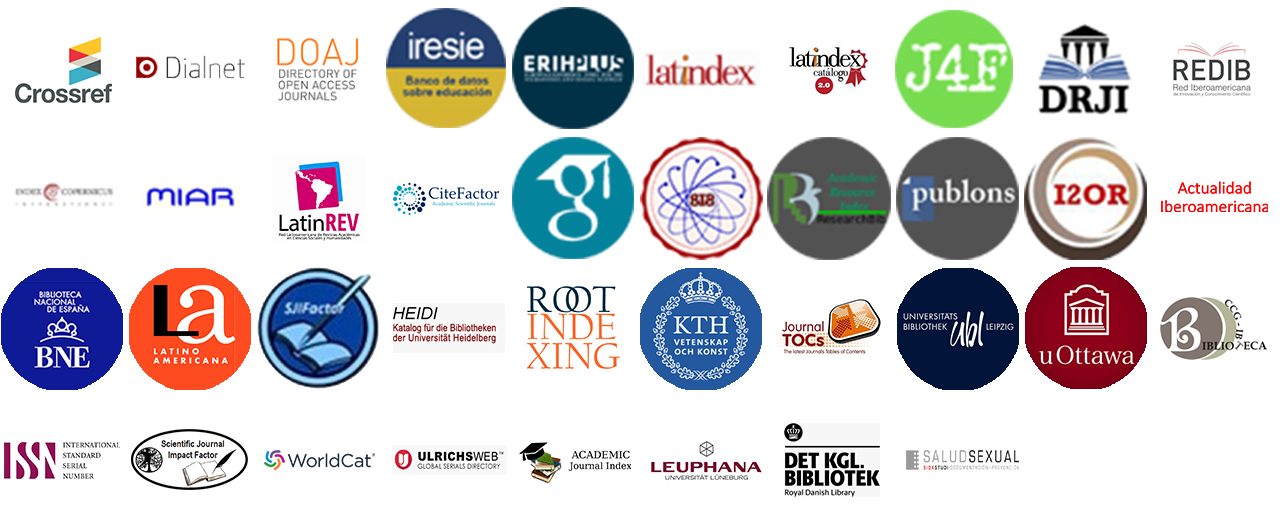Model for correct use of face mask in real time using convolutional neural networks
DOI:
https://doi.org/10.36825/RITI.09.17.011Keywords:
Convolutional Neural Networks, Multiclass Classification, Face Mask Detection, TensorFlow, MobilNetV2Abstract
Since Covid-19 appeared, the world has entered into a new stage, in which everybody is trying to mitigate the effects of the virus. The mandatory use of face masks in public places and when maintaining contact with people outside the family circle is one of mandatory measures that many countries have implemented, such as Ecuador, thus, the purpose of this article is to develop a convolutional neural network model using TensorFlow based on MobileNetV2, that allows to perform mask detection in real time video with the key feature of determining if the person is using the face mask properly or if it is not wearing a mask, in order to use the model with OpenCV and a pretrained neural network that detects faces. In addition, the performance metrics of the neural network are analyzed, including precision, accuracy, recall and the F1 score. All performance metrics consider the number of epochs for the training process, obtaining as a result a model that classifies between three groups: faces without face mask, faces wearing a face mask improperly and faces wearing a mask properly. with a great performance in all metrics; The results show values greater than 85% for precision, recall and F1 score, and accuracy values between 93% for 5 epochs and 95% for 25 epochs.
References
World Health Organization. (2020). WHO Coronavirus Disease (COVID-19) Dashboard. Recuperado de: https://covid19.who.int/
Ministerio de Salud Pública. (s/f). Actualización de casos de coronavirus en Ecuador – Ministerio de Salud Pública. Recuperado de: https://www.salud.gob.ec/actualizacion-de-casos-de-coronavirus-en-ecuador/
World Health Organization. (2020). Coronavirus disease (COVID-19): Masks. Recuperado de: https://www.who.int/emergencies/diseases/novel-coronavirus-2019/question-and-answers-hub/q-a-detail/q-a-on-covid-19-and-masks
World Health Organization. (2020). When and how to use masks. Recuperado de: https://www.who.int/emergencies/diseases/novel-coronavirus-2019/advice-for-public/when-and-how-to-use-masks
Zelinsky, A. (2009). Learning OpenCV---Computer Vision with the OpenCV. IEEE Robotics & Automation Magazine, 16 (3), 100-100. doi: https://doi.org/10.1109/MRA.2009.933612
Abadi, M., Barham, P., Chen, J., Chen, Z., Davis, A., Dean, J., Devin, M., Ghemawat, S., Irving, G., Isard, M., Kudlur, M., Levenberg, J., Monga, R., Moore, S., Murray, D. G., Steiner, B., Tucker, P., Vasudevan, V., Warden, P., Wicke, M., Yu, Y., Zheng, X. (2016). TensorFlow: A System for Large-Scale Machine Learning. Trabajo presentado en 12th USENIX Symposium on Operating Systems Design and Implementation, Savannah, USA. doi: https://doi.org/10.1016/0076-6879(83)01039-3
Jingbo, H., Yang, T. (2020). Surface Water Quality Classification Based on MobileNetV2. Journal of Physics: Conference Series, 1646, 1–4. doi: https://doi.org/10.1088/1742-6596/1646/1/012049
Mohammed Solyman, A. M. (2019). Introduction to Computer Vision. Cairo, Egypt: Egyptian Atomic Energy Authority.
Baştanlar, Y., Özuysal, M. (2014). Introduction to machine learning. Methods in Molecular Biology, 1107, 105–128. doi: https://doi.org/10.1007/978-1-62703-748-8_7
Camacho, C. (2018). Convolutional Neural Networks – Machine and deep learning educator. Recuperado de: https://cezannec.github.io/Convolutional_Neural_Networks/
Goyal, K., Agarwal, K., Kumar, R. (2017). Face detection and tracking: Using OpenCV. Trabajo presentado en International Conference on Electronics, Communication and Aerospace Technology (ICECA), Coimbatore, India. doi: https://doi.org/10.1109/ICECA.2017.8203730
Khan, M., Chakraborty, S., Astya, R., Khepra, S. (2019). Face Detection and Recognition Using OpenCV. Trabajo presentado en International Conference on Computing, Communication, and Intelligent Systems (ICCCIS), Greater Noida, India. doi: https://doi.org/10.1109/ICCCIS48478.2019.8974493
Ansor, A., Ritzkal, R., Afrianto, Y. (2020). Mask Detection Using Framework Tensorflow and Pre-Trained CNN Model Based on Raspberry Pi. Journal Mantik, 4 (3), 1539–1545.
Cakiroglu, O., Ozer, C., Gunsel, B. (2019). Design of a deep face detector by mask R-CNN. Trabajo presentado en 27th Signal Processing and Communications Applications Conference, Sivas, Turkey. doi: https://doi.org/10.1109/SIU.2019.8806447
Joshi, A. S., Joshi, S. S., Kanahasabai, G., Kapil, R., Gupta, S. (2020). Deep Learning Framework to Detect Face Masks from Video Footage. Trabajo presentado en 12th International Conference on Computational Intelligence and Communication Networks (CICN), Bhimtal, India. doi: https://doi.org/10.1109/CICN49253.2020.9242625
Qin, W., Wang, L., Luo, W. (2017). Face Recognition Based On Gabor Local Feature and Convolutional Neural Network. Trabajo presentado en 2nd International Conference on Computer Engineering, Information Science & Application Technology, Paris, France. doi: https://doi.org/10.2991/iccia-17.2017.94
Militante, S. V., Dionisio, N. V. (2020). Deep Learning Implementation of Facemask and Physical Distancing Detection with Alarm Systems. Trabajo presentado en Third International Conference on Vocational Education and Electrical Engineering (ICVEE), Surabayam, Indonesia. doi: https://doi.org/10.1109/ICVEE50212.2020.9243183
Deng, J., Dong, W., Socher, R., Li, L.-J., Li., K., Fei-Fei, L. (2010). ImageNet: A large-scale hierarchical image database. Trabajo presentado en IEEE Conference on Computer Vision and Pattern Recognition, Miami, FL, USA. doi: https://doi.org/10.1109/cvpr.2009.5206848
Saaduddin, M. (2019). GitHub - simplesaad/FaceDetection_Realtime: This is a Python 3 based project to perform fast & accurate face detection with OpenCV face detection to videos, video streams, and webcams using a pre-trained deep learning face detector model shipped with the library. Recuperado de: https://github.com/simplesaad/FaceDetection_Realtime
Published
How to Cite
Issue
Section
License
Copyright (c) 2021 Revista de Investigación en Tecnologías de la Información

This work is licensed under a Creative Commons Attribution-NonCommercial-NoDerivatives 4.0 International License.
Esta revista proporciona un acceso abierto a su contenido, basado en el principio de que ofrecer al público un acceso libre a las investigaciones ayuda a un mayor intercambio global del conocimiento.
El texto publicado en la Revista de Investigación en Tecnologías de la Información (RITI) se distribuye bajo la licencia Creative Commons (CC BY-NC
 ), que permite a terceros utilizar lo publicado citando a los autores del trabajo y a RITI, pero sin hacer uso del material con propósitos comerciales.
), que permite a terceros utilizar lo publicado citando a los autores del trabajo y a RITI, pero sin hacer uso del material con propósitos comerciales.



